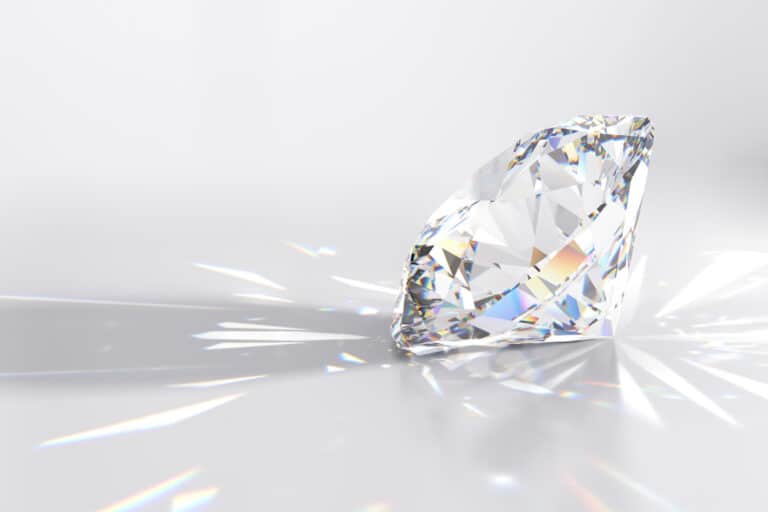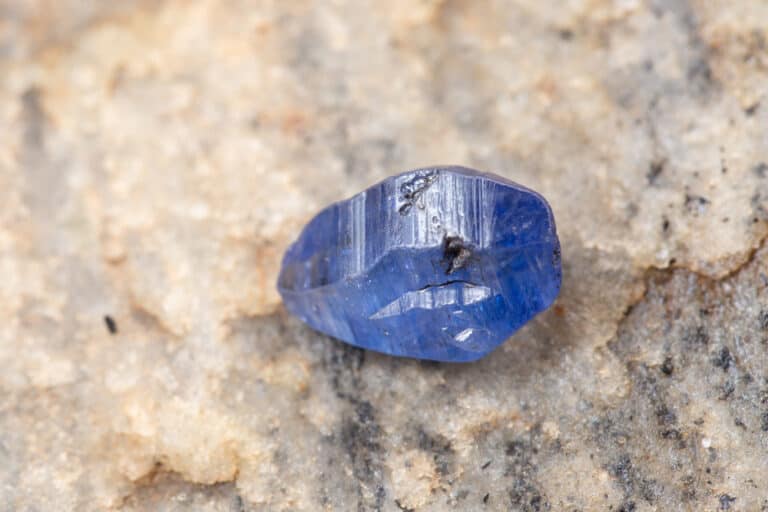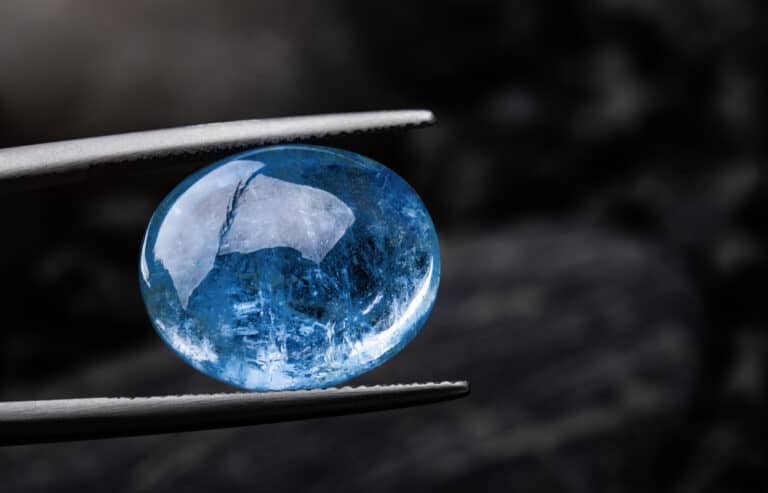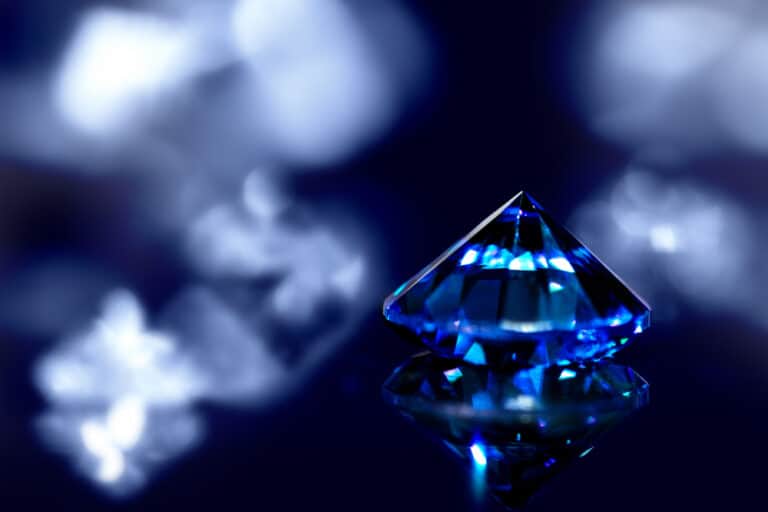When choosing your gemstones, you may find that sapphires are much rarer than diamonds. Most people, because of that, assume that sapphires will be more costly, but there is no truth in that. Diamonds are more expensive. And we discuss why.
Diamonds are more expensive than sapphires because they rate higher on the Mohs scale of mineral hardness. They are more durable, hold more brilliance, and have better dispersion and scintillation than sapphires. Sapphires are rarer, but diamonds are timeless.
It can be confusing to understand how a gemstone that is rarer is less costly than diamonds. There are more differences between diamonds and sapphires besides rarity. These differences, as discussed in this article, are the result of the price increase in diamonds.
Are Diamonds More Expensive Than Sapphire?
Diamonds are more expensive than sapphire. Many people looking into investing in one or both of these gemstones are curiously confused about it. Diamonds are more raved about, but isn’t the gemstone that is harder to find supposed to cost more? The April birthstone (diamond) is pricier than the September birthstone (sapphire), regardless of the sapphire rarity.
Why Do Diamonds Cost More Than Sapphires?
If you have looked into the price range of diamonds and sapphires, you will have realized that sapphires of the same carat as a diamond will be more budget-friendly. The cut, quality, size, and every other aspect can match, but the diamond will be more expensive. That is because diamonds outshine sapphires by a long shot, not just in literal sparklines.
Here is why diamonds are more expensive than sapphires:
Durability
Diamonds are more durable than sapphire. On the Mohs scale (the system for rating the relative hardness of various materials), diamonds rate at a 10/10 for mineral hardness. Sapphires rate at 9, third in place after moissanite at 9.5. Not only does sapphire have a lower sturdiness rating, but it is not even directly below diamonds on the scale.
The durability of diamonds makes them last longer and less prone to damage like scratches, chipping, and dullness. Sapphires have a similar sturdiness and are also excellent for daily wear, but diamonds will always have a higher hardness rating on the Mohs scale.
Brilliance
Diamonds have more brilliance than sapphires. The reflection measures the diamond’s brilliance from an inner white light that sparkles from within and gives the diamond its elegant radiance.
Sapphires have excellent brilliance, but it depends on the color and cut of the sapphire. Since it comes in several colors and shades, and the color impacts the cut, it can vary. Sapphires shine and sparkle with the correct cut and shape, whereas diamonds ooze their radiance in every manner.
Dispersion
Dispersion is what jewelers and gemstone professionals talk about when they mention “fire.” Diamonds have a white light within that splits into seven primary colors. Those colors are visible to the naked eye by refraction. The light reflects on the inner surfaces because it disperses in the gem.
Diamonds have a clarity and brilliance that provides this “fire” unlike any other gemstone. Sapphires have stunning dispersion, like other gemstones, but sapphires, even white ones, disperse more blueish light. Diamonds emit all the rainbow colors, creating more of that “fire” to the naked eye than sapphires.
Scintillation
Scintillation in a diamond leads to the sparkle when you look at the gemstone in motion. It reflects light flashes from within the stone as it moves into light and darkness. The scintillation is also inclusive of dispersion and brilliance. That is why you get a mosaic of light when you see diamonds in motion.
Sapphires naturally offer much less sparkle than diamonds. Even white sapphires that are clearer will include less scintillation. Due to the blueish hue of sapphires and the pureness of the colorlessness in diamonds, the April birthstone cannot be beaten in shine and sparkle. Diamonds also have more scintillation than any other gemstone.
Timelessness
Diamonds are one of the most ancient earth gemstones- first discovered in India in the 4th century BC. They are also the most enduring and precious gemstones with dazzling beauty, inner fire, and mosaic sparkle. Their strength and reliability make them dependable for daily and occasional wear in dainty and heavy pieces.
Sapphires are the rarest natural blue gemstone. They ooze royalty and have luster. They are not far from diamonds in strength, and ancient cultures believe they have healing abilities. Sapphires are safe to wear every day but are more damage-prone than diamonds. They are also highly unique and stand out compared to diamonds.
The September birthstone demands and acquires attention by screaming loudly, while diamonds steal the show calmly and elegantly. All factors involved make diamonds timeless and a lifelong favorite. As stunning as they are, Sapphires can wear off in people’s obsession with them over time.
Difference In Mineral Composition
Diamonds and sapphires have different mineral compositions. Diamonds are made of the carbon element, and sapphires are made of the corundum element. Carbon has physical and chemical properties unlike any other element making it the most fascinating and expensive of nature’s elements.
Diamonds are made of pure carbon. They have a tiny amount of trace elements, unlike sapphire (corundum), that is multiple elements, aluminum and oxygen, and various trace elements. Pure gemstones (diamonds) will always contain higher quality, increasing their price value.
Lab Created Sapphire
Many sapphires are created in labs. Natural gemstones come at a high price, including natural sapphires. But there are lab-created sapphires that look closely similar to the natural gem. Lab-created sapphires will be significantly cheaper than diamonds for obvious reasons. They are easily made, sparkle less, and are more prone to scratches and damage.

Conclusion
Sapphires are more budget-friendly than diamonds, even in the same carat, cut, and clarity, because they are a pure element and timeless in their beauty. Diamonds also have more brilliance, inner fire, and sparkle. They are the hardest mineral on the Mohs scale, making them the most durable and sturdy gemstone.
References
- https://en.wikipedia.org/wiki/Sapphire
- https://www.britannica.com/science/Mohs-hardness
- https://www.britannica.com/science/Mohs-hardness
- https://www.gia.edu/sapphire
- https://www.britannica.com/topic/diamond-gemstone
- https://www.gia.edu/diamond
- https://www.gia.edu/birthstones
- https://en.wikipedia.org/wiki/Corundum






